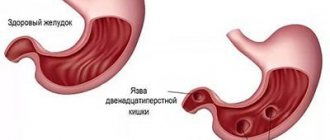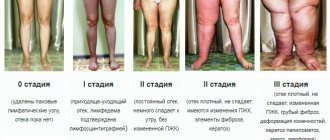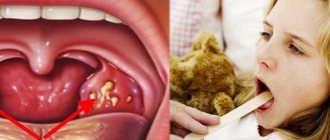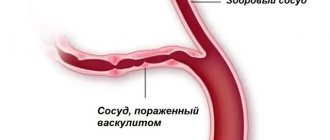Genetic pathologies are rare congenital diseases that are difficult to predict in advance. They arise even at the moment when the formation of the embryo occurs. Most often they are passed on from parents, but this does not always happen. In some cases, gene disorders occur independently. Bruton's disease is considered one of these pathologies. It refers to primary immunodeficiency conditions. This disease was discovered recently, in the mid-20th century. Therefore, it has not been fully studied by doctors. It occurs quite rarely, only in boys.
Bruton's disease: history of study
This pathology refers to X-linked chromosomal abnormalities transmitted at the genetic level. Bruton's disease is characterized by disturbances in humoral immunity. Its main symptom is susceptibility to infectious processes. The first mention of this pathology was in 1952. At that time, the American scientist Bruton studied the history of a child who was sick more than 10 times at the age of 4. Among the infectious processes in this boy were sepsis, pneumonia, meningitis, and inflammation of the upper respiratory tract. When examining the child, it was found that there were no antibodies to these diseases. In other words, no immune response was observed after the infections.
Later, in the late 20th century, Bruton's disease was studied again by doctors. In 1993, doctors were able to identify a defective gene that causes immune dysfunction.
Agammaglobulinemia or Bruton's disease is a hereditary disease in which the human body produces insufficient amounts of immune molecules called immunoglobulins, or antibodies, which are designed to protect the body from bacteria and viruses. Low levels of these antibodies make the body more susceptible to various infections.
Causes
Agammaglobulinemia is a rare disease that mainly affects men. This disease is provoked by a genetic defect, as a result of which the growth of normal, mature immune cells - B-lymphocytes - is blocked.
As a result, the body produces very small amounts (and sometimes none at all) of immunoglobulins in the blood. Immunoglobulins play an important role in protecting the body from a variety of diseases and infections.
People suffering from Bruton's disease get sick often and are especially susceptible to bacteria such as Haemophilus influenzae, pneumococci (Streptococcus pneumoniae) and streptococci. Often concomitant infections affect:
- Gastrointestinal tract
- Joints
- Lungs
- skin
- Upper respiratory tract
Agammaglobulinemia is a hereditary disease, which means that a similar pathology can be observed in other relatives of the patient.
Symptoms
The disease is characterized by frequent episodes of the following bacterial diseases:
- Bronchitis
- Chronic diarrhea
- Conjunctivitis (eye infection)
- Otitis media
- Pneumonia
- Sinusitis
- Skin diseases
- Upper respiratory tract diseases
The above concomitant infections are most often observed in children in the first 4 years.
Other symptoms include:
- Bronchiectasis (dilation of the bronchi)
- Unreasonable asthma attacks
Diagnostics
The disorder is detected by analyzing the amount of immunogloblin in the body.
Tests include:
- Flow cytometry to measure circulating B cells
- Immunoelectrophoresis – serum
- Measuring the amount of immunoglobulins - IgG, IgA, IgM (usually measured using nephelometry)
Treatment
Treatment includes steps to reduce the number and severity of co-infections. Patients are given immunoglobulin intravenously, which helps strengthen the immune system.
Antibiotics are often used to treat bacterial infections.
Genetic counseling may be helpful.
Course of the disease
Treatment with intravenous immunoglobulins significantly improves the health of patients suffering from Agammaglobulinemia.
Without treatment, severe comorbidities can be fatal.
Possible complications
- Arthritis
- Chronic sinusitis and lung diseases
- Eczema
- Intestinal malabsorption syndromes
Causes of Bruton's disease
Agammaglobulinemia (Bruton's disease) is most often hereditary. The defect is considered a recessive trait, so the probability of having a child with the pathology is 25%. Women are carriers of the mutant gene. This is due to the fact that the defect is localized on the X chromosome. However, the disease is transmitted only to males. The main cause of agammaglobulinemia is a defective protein that is part of the gene encoding tyrosine kinase. In addition, Bruton's disease can also be idiopathic. This means that the reason for its appearance remains unclear. Among the risk factors affecting the genetic code of a child are:
- Alcohol and drug abuse during pregnancy.
- Psycho-emotional stress.
- Exposure to ionizing radiation.
- Chemical irritants (harmful production, unfavorable environment).
What is the pathogenesis of the disease?
The mechanism of disease development is associated with a defective protein. Normally, the gene responsible for encoding tyrosine kinase is involved in the formation of B lymphocytes. They are immune cells that are responsible for the body's humoral defense. Due to the failure of tyrosine kinase, B lymphocytes do not mature completely. As a result, they are not able to produce immunoglobulins - antibodies. The pathogenesis of Bruton's disease is the complete blocking of humoral defense. As a result, when infectious agents enter the body, antibodies to them are not produced. A feature of this disease is that the immune system is able to fight viruses, despite the absence of B lymphocytes. The nature of the violation of humoral protection depends on the severity of the defect.
Treatment and prevention
Patients are prescribed replacement therapy
Patients require constant replacement therapy throughout their lives. For this purpose, injections of immunoglobulins are used, starting with the introduction of IgG at a high level, then the dosage is reduced. The frequency and dose of immunoglobulin administration is determined individually. Typically, the patient should receive immunoglobulins once every 3 weeks in an amount of 300 to 500 mg/kg body weight. Another method of therapy is plasma transfusion from healthy donors.
Against the background of infectious diseases, the dosage of immunoglobulins is increased; a mandatory element of treatment is the massive administration of antibiotics. Antibiotics are prescribed depending on the infection, but the duration of their use is always prolonged and the dose is maximum. In some cases, antibiotic therapy is carried out daily, even in the absence of infection.
Prevention involves visiting a geneticist before conceiving a child. If a child was born with Bruton's disease, it is necessary to begin therapy from the first days of life. Vaccination based on live viruses (poliomyelitis, measles, mumps, rubella) is excluded. Boys in the same family, including cousins, must be examined for the presence of pathology.
To maintain normal life, in addition to therapy, you should follow the rules: avoid contact with sick people, spend as much time as possible in clean air, eat well and rest.
Bruton's disease: symptoms of pathology
Pathology first makes itself felt in infancy. Most often, the disease manifests itself by the 3-4th month of life. This is explained by the fact that at this age the child’s body ceases to be protected by maternal antibodies. The first signs of pathology may be a painful reaction after vaccination, skin rashes, and upper or lower respiratory tract infections. Nevertheless, breastfeeding protects the baby from inflammatory processes, since mother's milk contains immunoglobulins.
Bruton's disease manifests itself at approximately 4 years of age. At this time, the child begins to contact other children and attends kindergarten. Among infectious lesions, meningo-, strepto- and staphylococcal microflora predominate. As a result, children may be susceptible to purulent inflammation. The most common diseases include pneumonia, sinusitis, otitis media, sinusitis, meningitis, and conjunctivitis. If not treated in a timely manner, all these processes can develop into sepsis. Dermatological pathologies can also be a manifestation of Bruton's disease. Due to a reduced immune response, microorganisms quickly multiply at the site of wounds and scratches.
In addition, manifestations of the disease include bronchiectasis - pathological changes in the lungs. Symptoms include shortness of breath, chest pain, and sometimes hemoptysis. It is also possible for inflammatory foci to appear in the digestive organs, genitourinary system, and mucous membranes. Swelling and pain in the joints are periodically observed.
Disease prognosis
Early diagnosis and timely treatment - favorable prognosis
The prognosis depends on how early the pathology was detected and on concomitant diseases. No connection has been found between a particular mutation in the tyrosine kinase gene and the severity of the disease. Often, immunoglobulin therapy and active antibiotic treatment cannot prevent the development of severe forms of pneumonia, meningitis, cancer or leukemia.
But during periods of absence of infectious diseases, patients are able to lead an active lifestyle, play sports, study or work. With correct management of the disease, infections are reduced to 3-4 times a year.
The hope for patients is developments in gene therapy to correct the Bruton's Tyrosine Kinase mutation.
Diagnostic criteria for the disease
The first diagnostic criterion is frequent morbidity. Children suffering from Bruton's pathology suffer more than 10 infections per year, as well as several times during the month. Diseases can recur or replace each other (otitis media, tonsillitis, pneumonia). When examining the pharynx, there is no hypertrophy of the tonsils. The same applies to palpation of peripheral lymph nodes. You should also pay attention to the baby’s reaction after vaccination. Significant changes are observed in laboratory tests. The CBC shows signs of an inflammatory reaction (increased number of leukocytes, accelerated ESR). At the same time, the number of immune cells is reduced. This is reflected in the leukocyte formula: a low number of lymphocytes and an increased content of neutrophils. An important study is an immunogram. It reflects the decrease or absence of antibodies. This sign allows you to make a diagnosis. If the doctor has doubts, a genetic test can be performed.
Publications in the media
Serum sickness is an allergic reaction to heterologous serums or drugs, characterized by fever, arthralgia, skin rashes and lymphadenopathy, manifesting 5–12 days after application of the allergen.
Statistical data. When using heterologous serums - 2–5% of cases.
Etiology • Introduction of heterologous (usually horse) serums: antitetanus, anti-diphtheria, antibotulinum, anti-gangrenosis, anti-snake bite serum • Introduction of heterologous immunoglobulins: anti-rabies, against tick-borne encephalitis, against Japanese encephalitis, anti-leptospirosis, anti-anthrax, anti-lymphocytic and anti-thymocyte • Taking drugs: penicillins, cephalosporins, sulfonamides, thiouracil, streptomycin • Administration of tetanus toxoid.
Risk factors • History of reactions to the administration of serums • Allergy to animal epidermal proteins (contraindication for the administration of heterologous serums due to the high risk of cross-reactions).
Pathogenesis • Serum sickness is classified as allergic reactions of type 3 (associated with the production of precipitating antibodies of the IgG class, forming insoluble immune complexes with Ag) • Immune complexes retained in places of intense filtration (kidneys, lymph nodes, capillaries of the skin and intestines, synovial surfaces) activate the system complement, as well as the extracellular release of neutrophil lysosome contents, which causes damage to these tissues.
Clinical manifestations develop on days 5–12 (sometimes later) after administration of a heterologous serum or other allergen • Skin symptoms (85–95%) usually in the form of urticaria (urticarial vasculitis); sometimes erythematous or scarlet-like • Fever (in 70%), appearing 1–2 days before or with the rash, lasting from 2–3 days to 2–3 weeks • Lymphadenopathy affecting regional and distant lymph nodes • Joint lesions (knees) , elbows, ankles, hands and feet): arthralgia (in 25%), in severe forms with exudation • Abdominal pain, nausea and vomiting (in severe cases - melena) • Kidney damage (in severe cases): edema, rarely - albuminuria and the appearance of casts in the urine • Neurological lesions: peripheral neuritis • Myocarditis (extremely rare).
Degrees of severity • Mild: isolated symptoms • Severe: pronounced fever, lymphadenopathy, skin manifestations, as well as changes in the cardiovascular system, gastrointestinal tract and kidneys • Extremely severe degree in the form of anaphylactic form: anaphylactic shock developing in persons who have received drugs or serum previously , or in the presence of sensitization to other equine proteins (epidermis, mare's milk proteins).
Diagnostics
• History - administration of heterologous serums or drugs 5-14 days before the onset of symptoms.
• Laboratory tests •• In the prodromal period, leukocytosis with eosinophilia, increased ESR are possible •• With kidney damage - proteinuria •• Reduction of C3 and C4 complement components •• Cryoprecipitation of serum.
• Pathomorphology. Nodular changes in areas of the arteries, reminiscent of periarteritis nodosa.
Treatment • For mild cases: antihistamines (for example, diphenhydramine 50 mg IM or IV, clemastine, chloropyramine) - for urticaria and generalized itching • For severe cases - dexamethasone 4-8 mg IM or IV, prednisolone at the rate of 0.5 mg/kg orally for 10–14 days with gradual withdrawal • Anaphylactic shock - see Anaphylaxis.
Prevention • Particular care should be taken when administering heterologous serums to patients with a history of bronchial asthma, urticaria or other allergic manifestations. • Before the first administration of serum to a patient without a history of allergic manifestations, a skin test is performed with the intradermal administration of 0.1 ml of serum at a dilution of 1:10. The reaction is assessed after 20 minutes. The test is negative if there is no reaction or an area of edema/hyperemia with a diameter of less than 1 cm appears • If the serum is re-administered or if there is a history of allergies, a serum dilution of 1:1000 is used for the skin test • In case of a negative skin reaction, 0.1 ml of undiluted serum is injected intradermally, then in the absence of a local or general reaction, the remaining dose of serum is administered intramuscularly after 45 minutes • In case of a positive skin test or reaction to the administration of 0.1 ml of serum, it is recommended: •• Use of human immunoglobulin, if possible •• Administration of serum only for health reasons according to the following scheme : serum at a dilution of 1:100 is administered subcutaneously in a volume of 0.5–2.0–5.0 ml with an interval of 15 minutes, then at the same intervals - 0.1 and 1 ml of undiluted serum; if there is no reaction, the complete serum is administered dose under the cover of antihistamines (diphenhydramine 50 mg orally or intramuscularly) and GC (prednisolone 60–90 mg).
Complications • Neuritis • Glomerulonephritis • Anaphylactic shock • Myocarditis.
ICD-10 • G61.1 Serum neuropathy • T80.6 Other serum reactions • T80.5 Anaphylactic shock associated with serum administration • Z88.7 Personal history of allergy to serum or vaccine
Note • In persons who have previously received serum, symptoms may appear in the first 3-5 days - the so-called accelerated form of the disease • The reaction to the drug is called serum-like.
Differences between Bruton's disease and similar pathologies
This pathology is differentiated from other primary and secondary immunodeficiencies. Among them are agammaglobulinemia of the Swiss type, DiGeorge syndrome, and HIV. In contrast to these pathologies, Bruton's disease is characterized by a violation of only humoral immunity. This is manifested by the fact that the body is able to fight viral agents. This factor differs from agammaglobulinemia of the Swiss type, in which both humoral and cellular immune responses are impaired. To make a differential diagnosis with DiGeorge syndrome, it is necessary to take a chest x-ray (thymic aplasia) and determine the calcium level. To exclude HIV infection, palpation of the lymph nodes and ELISA are performed.
Treatment methods for agammaglobulinemia
Unfortunately, it is impossible to completely overcome Bruton's disease. Treatment methods for agammaglobulinemia include replacement and symptomatic therapy. The main goal is to achieve a normal level of immunoglobulins in the blood. The amount of antibodies should be close to 3 g/l. For this purpose, gamma globulin is used at a rate of 400 mg/kg body weight. The concentration of antibodies should be increased during acute infectious diseases, since the body cannot cope with them on its own.
In addition, symptomatic treatment is carried out. The most commonly prescribed antibacterial drugs are Ceftriaxone, Penicillin, and Ciprofloxacin. For skin manifestations, local treatment is necessary. It is also recommended to wash the mucous membranes with antiseptic solutions (irrigation of the throat and nose).
Diagnostics
The blood pattern has its own characteristics
During diagnosis, the patient's medical history is studied, and characteristic signs are noted using radiography: abnormally small sizes of the tonsils and lymph nodes, disruption of the structure of the spleen.
Laboratory research data reveals:
- Significant decrease in B lymphocytes.
- Leukopenia may be accompanied by neutropenia.
- The number of T-lymphocytes is usually close to normal, but can be increased as a compensatory function.
- All isotypes of immunoglobulins (IgG, IgM, IgA, IgE, IgD) are absent or markedly reduced. The IgG level is determined first; a level < 100 mg/dL is a prerequisite for diagnosis.
- There are no plasma cells in the intestinal mucosa.
Additional examinations include ultrasound of the abdominal organs, colonoscopy, and lung diagnostics.
Prognosis for Bruton's agammaglobulinemia
Despite lifelong replacement therapy, the prognosis for agammaglobulinemia is favorable. Constant treatment and prevention of infectious processes reduce the incidence to a minimum. Patients usually remain able-bodied and active. With the wrong approach to treatment, complications may develop, including sepsis. In case of advanced infections, the prognosis is unfavorable.
Henry Ford Disease, or Carpal Tunnel Syndrome
As Engels said, labor made a man out of a monkey. And monotonous work - the same one, the organization of which allowed Henry Ford with his assembly line to become a very rich man - led not only to an increase in production, but also to the emergence of specific diseases.
It is not at all surprising that builders often suffer from arthrosis of the shoulder joint, surgeons who spend many hours tensely at the operating table from varicose veins, and office workers from carpal tunnel syndrome, which is also known as carpal tunnel syndrome.
What is carpal tunnel syndrome?
Scientists claim that there is no special connection between using a mouse with a keyboard and the appearance of characteristic pain in the hand: they say, along with white-collar workers, pianists, seamstresses, and even sign language interpreters also suffer from carpal tunnel syndrome. Nevertheless, hammering on keys for many hours certainly does not improve your health.
Carpal (carpal) tunnel syndrome occurs when one of the three nerves responsible for the mobility and sensitivity of the hand - the median - becomes pinched in the wrist area, on the back of the hand. This occurs due to a combination of two factors - the genetically determined anatomical narrowness of the carpal tunnel and the long stay of the hand in an unnatural position.
"De-energized" hand
We all know the problem of a broken phone or laptop charging cable: one fine day you notice that due to constant kinks at the base of the cord, the braiding has burst, which means it’s time to go to the store for a new one or, armed with electrical tape, try to temporarily postpone the purchase .
Approximately the same situation occurs when you methodically compress the median nerve during work year after year: the first symptom, as a rule, is discomfort in the pads of the thumb, index and middle fingers. It can be aching pain, tingling, numbness, or even a kind of “shooting” - as if the hand is being shocked. Some patients note that it is as if a tight bracelet is locked around the wrist, which limits the mobility of the hand.
During periods of exacerbation, a person experiences problems with usual actions - he cannot comfortably pick up a spoon while eating, transfers his mobile phone to the other hand while talking, refuses to sew because he cannot thread the needle. Shaking the limb brings temporary relief, but after a few minutes or hours the discomfort returns, sometimes even preventing sleep.
In severe cases, tunnel syndrome can lead to atrophy of the thumb muscles, making it impossible to even hold an object in the affected hand. In this case, the disease usually affects the dominant hand - the right hand in right-handed people and the left hand in left-handed people.
Diagnosis is a delicate matter
Even if you find yourself with symptoms characteristic of carpal tunnel syndrome, do not rush to label yourself as “disabled office worker” and go on an Internet search for quick treatment. If your hands become numb or you experience discomfort, this may be caused by other diseases that have nothing to do with compression of the median nerve. For example, inflammation of the wrist joint or tumor. Therefore, if pain and problems with hand mobility and sensitivity occur, it is important to make an appointment with a neurologist as soon as possible.
And here we are faced with a popular problem in domestic medicine: you will be diagnosed without problems (although you will most likely have to pay for electroneuromyography and MRI of the joint yourself), but the prospects for treatment will be vague.
And it’s not that neurologists haven’t learned how to treat carpal tunnel syndrome—it’s just that few patients decide to make a radical change in activity, even if only for the sake of their own health. And since this pathology has not yet been classified as an occupational hazard, you should not count on an official transfer to another position while maintaining the same salary.
Therapeutic measures: radical and not so radical
If you are not ready to take a time-out of several months or retrain as an ambidexter, then you need to approach treatment responsibly. First, deal with unpleasant symptoms: drugs from the group of non-steroidal anti-inflammatory drugs will help for this. They will relieve inflammatory swelling of the nerve and numb the problem area. But don’t get carried away with ibuprofen and the like: this is only a temporary measure of help.
The most important thing is to eliminate the cause of the “break” of the nerve. To do this, it is necessary that the hand and forearm be in the same plane while working. That is, either pick up a flat computer mouse, or make it a rule to place a cushion under your arm to level the position of the limb.
By the way, a good move would be to buy an orthosis that fixes the wrist in one position. There is no need to wear it around the clock - only during work that caused carpal tunnel syndrome. Physiotherapy and massage will also ease the symptoms of carpal tunnel syndrome, but remember that warming up the wrist should only be done with the approval of a doctor and without exacerbation of the disease.
To restore nerve fibers, your doctor may prescribe you injections of a drug containing vitamin B6 - do not ignore this recommendation, because the process of restoring the median nerve will take more than one month. Of course, there is a lot of this compound in cereals, walnuts, bananas and seafood, but it is unlikely that diet correction will help on its own, although in combination with other approaches it will certainly be useful.
The last resort in the treatment of carpal tunnel syndrome is surgery - during the operation, the doctor cuts the tissue of the wrist at the base of the palm, and then the transverse carpal ligament, which allows the nerve to be freed from its anatomical “captivity”.
Despite the apparent simplicity of this solution, you need to be prepared for a long recovery period and possible side effects: sometimes after surgery on the hand, patients complain of chronic weakness in the hand, which prevents them from performing usual actions with the same dexterity.
***
Finally, a few words about prevention. The idea of limiting time spent at the computer seems blasphemous to almost every modern person, so it is more appropriate to solve the issue of strengthening the ligaments and tendons of the hands. Pull-ups on the horizontal bar, jumping rope and the now so popular plank exercise will help you avoid the unpleasant consequences of carpal tunnel syndrome. And for fun, you can try using a graphics tablet instead of a mouse - after all, scientists have long proven the beneficial effects of handwriting on brain function!
Olga Kashubina
Photo thinkstockphotos.com
Products by topic: [product](ibuprofen), [product](nimesil), [product](nurofen), [product](pyridoxine)






